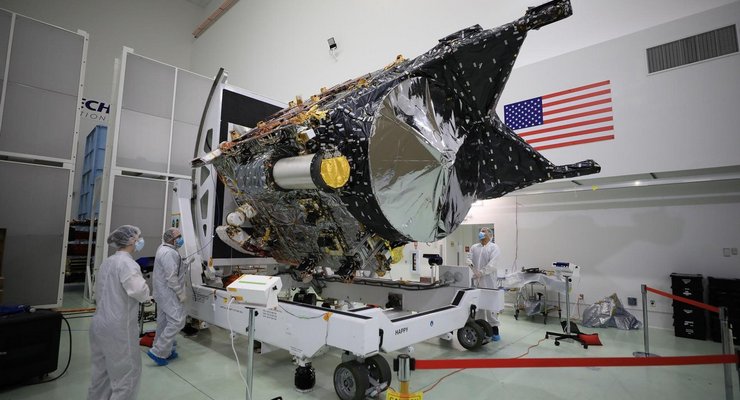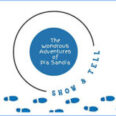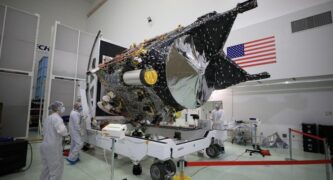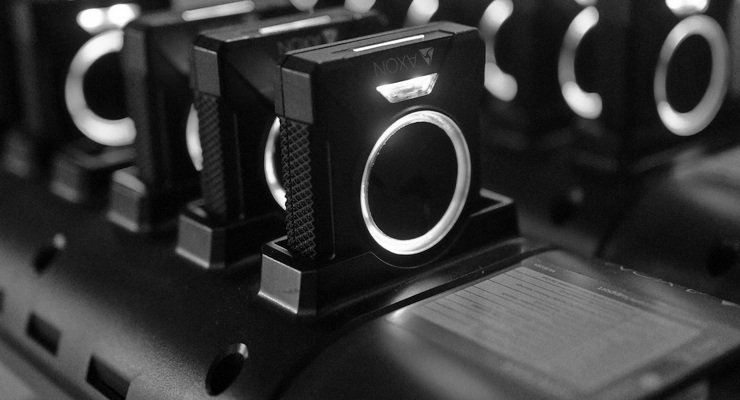
NASA’s Psyche spacecraft is shown in a clean room at the Astrotech Space Operations facility near the agency’s Kennedy Space Center in Florida on Dec. 8, 2022. DSOC’s gold-capped flight laser transceiver can be seen, near center, attached to the spacecraft. Credit: NASA/Ben Smegelsky
NASA’s Deep Space Optical Communications (DSOC) technology demonstration, led by the agency’s Jet Propulsion Laboratory in Pasadena, has achieved significant milestones in its mission to revolutionize space communications. Riding aboard the Psyche spacecraft, bound for the asteroid belt between Mars and Jupiter, the DSOC system has proven its ability to transmit data at unprecedented speeds from deep space.
On April 8, the DSOC flight laser transceiver successfully transmitted a copy of engineering data from over 140 million miles away, 1½ times the distance between Earth and the Sun, according to Meera Srinivasan, the project’s operations lead at JPL. “This represents a significant milestone for the project by showing how optical communications can interface with a spacecraft’s radio frequency comms system,” Srinivasan said. During this test, the spacecraft transmitted data at a maximum rate of 25 Mbps, surpassing the project’s goal of proving at least 1 Mbps was possible at that distance.
The laser communications technology, designed to transmit data 10 to 100 times faster than current state-of-the-art radio frequency systems, has already demonstrated its capabilities. On December 11, 2023, the experiment beamed a 15-second ultra-high-definition video to Earth from 19 million miles away at a maximum rate of 267 megabits per second (Mbps), comparable to broadband internet download speeds. This video was sent along with other test data, including digital versions of Arizona State University’s Psyche Inspired artwork.
JPL has been at the forefront of the DSOC project, with team members leading various aspects of the mission. Ken Andrews, project flight operations lead at JPL, noted that after receiving data from the Deep Space Network (DSN) and Palomar Observatory, “we verified the optically downlinked data at JPL.”
The project has also conducted a “turnaround experiment,” where data, including test data and digital pet photographs, was relayed to Psyche and back again, a round trip of up to 280 million miles (450 million kilometers). This experiment also downlinked large amounts of the tech demo’s own engineering data.
Additionally, JPL led an experiment to combine multiple ground stations, including the experimental radio frequency-optical antenna at the DSN’s Goldstone Deep Space Communications Complex in Barstow, California, and a detector at JPL’s Table Mountain facility near Wrightwood, California. Ryan Rogalin, the project’s receiver electronics lead at JPL, explained that this “arraying” strategy can help boost the deep space signal and provide redundancy in case of weather-related disruptions.
The Psyche mission, led by Arizona State University, is the 14th mission selected as part of NASA’s Discovery Program under the Science Mission Directorate, managed by the agency’s Marshall Space Flight Center in Huntsville, Alabama. NASA’s Launch Services Program, based at the agency’s Kennedy Space Center in Florida, managed the launch service. Maxar Technologies provided the high-power solar electric propulsion spacecraft chassis from Palo Alto, California.
As the Psyche spacecraft continues its journey to the asteroid belt, the DSOC demonstration, under JPL’s leadership, will continue to push the boundaries of deep space communications, setting the stage for future missions and discoveries that will expand our understanding of the universe.














 1 comment
1 comment


